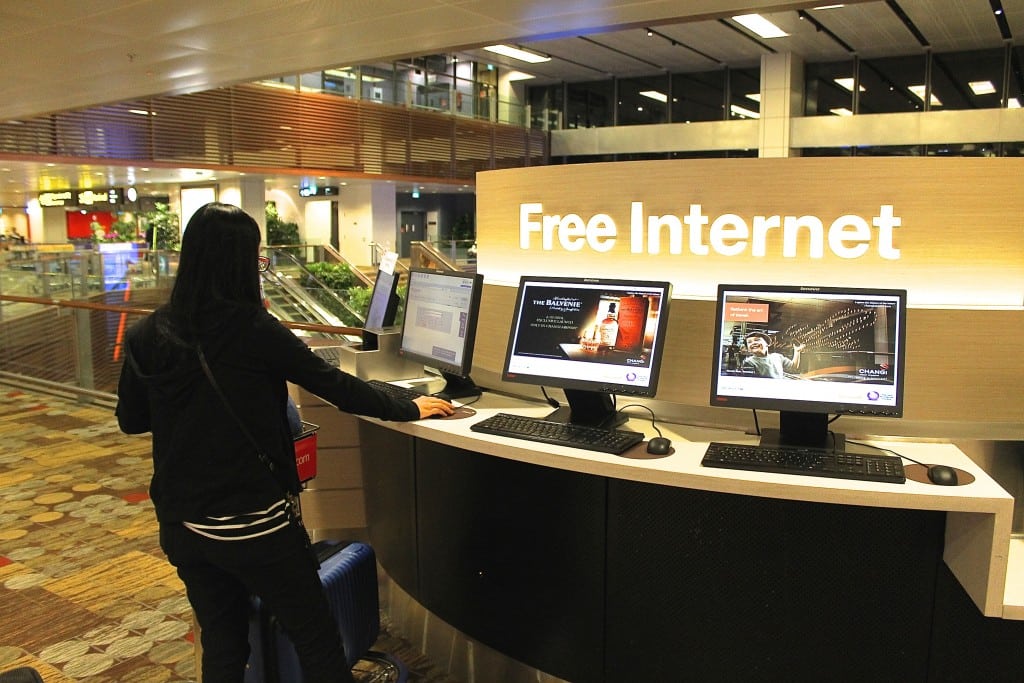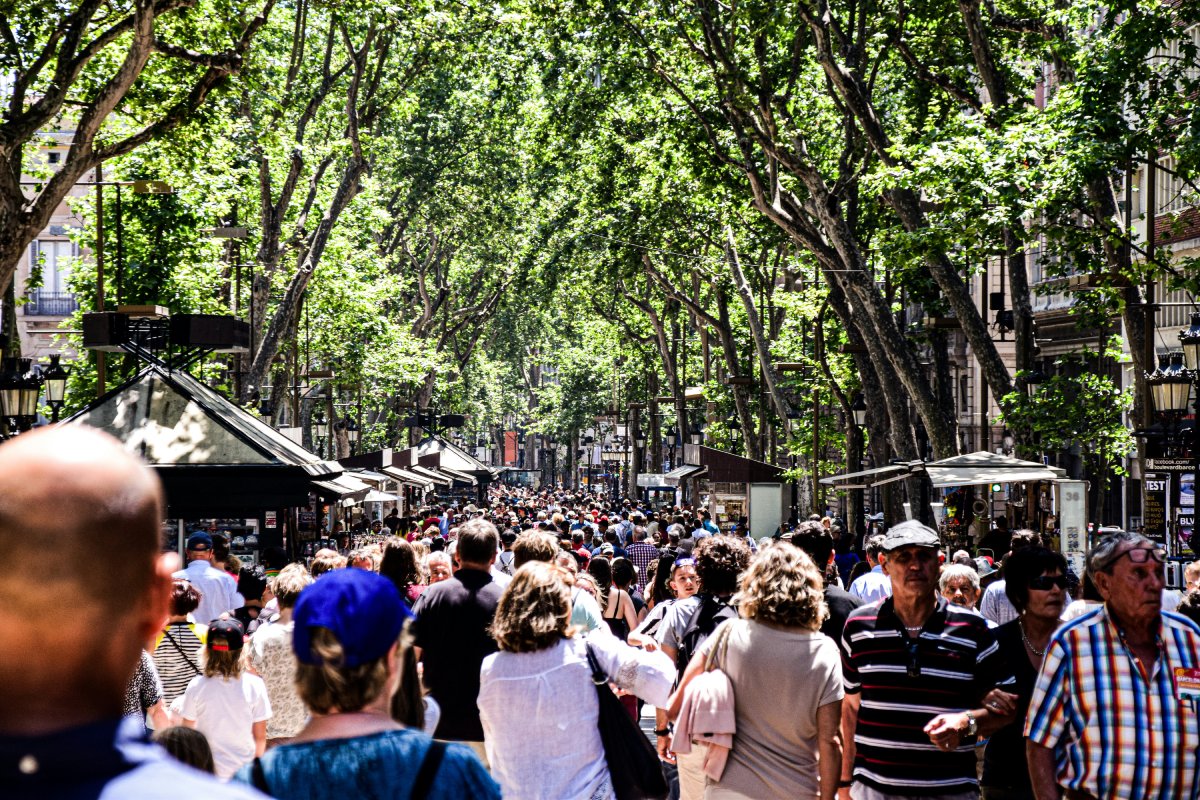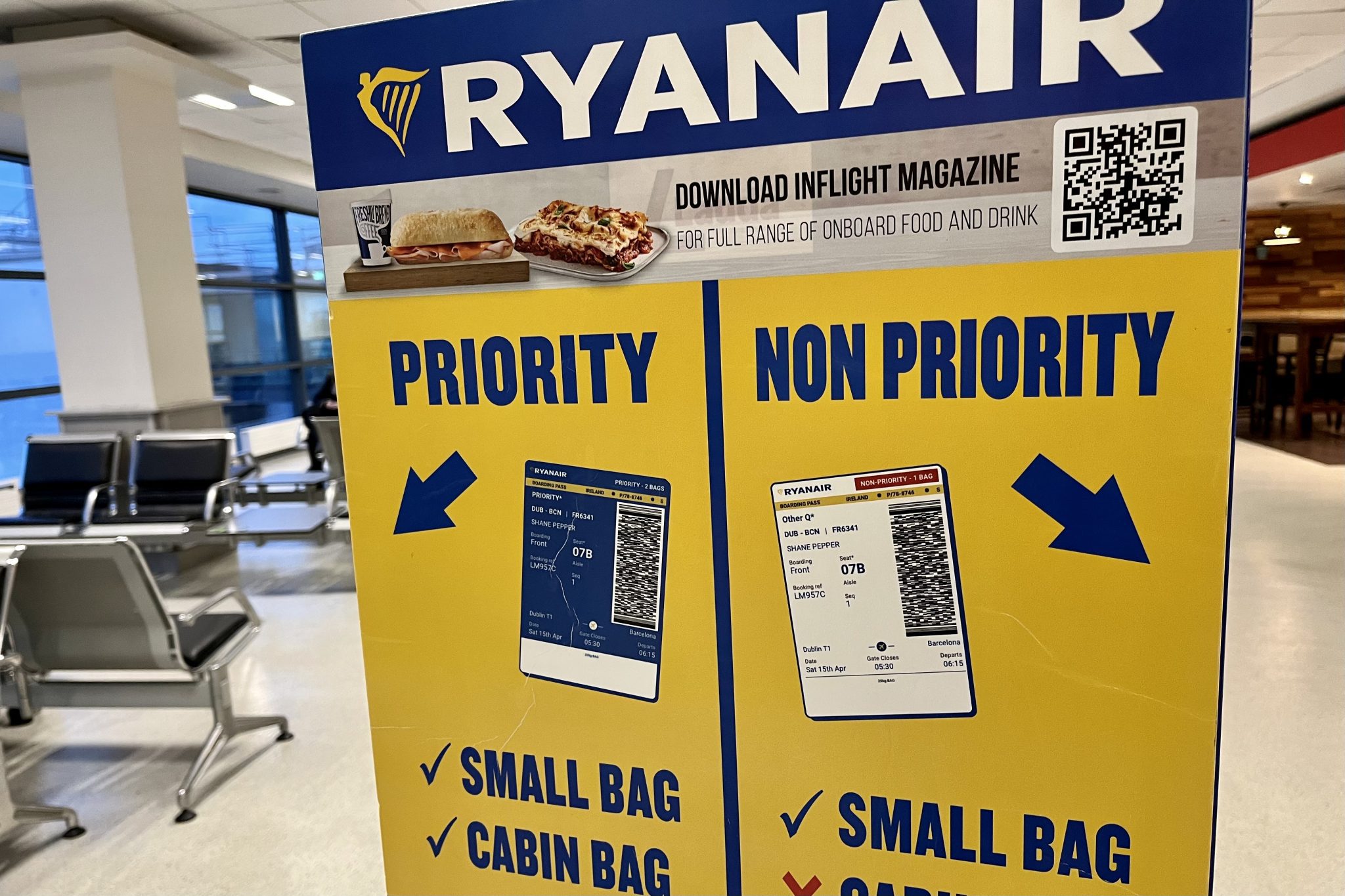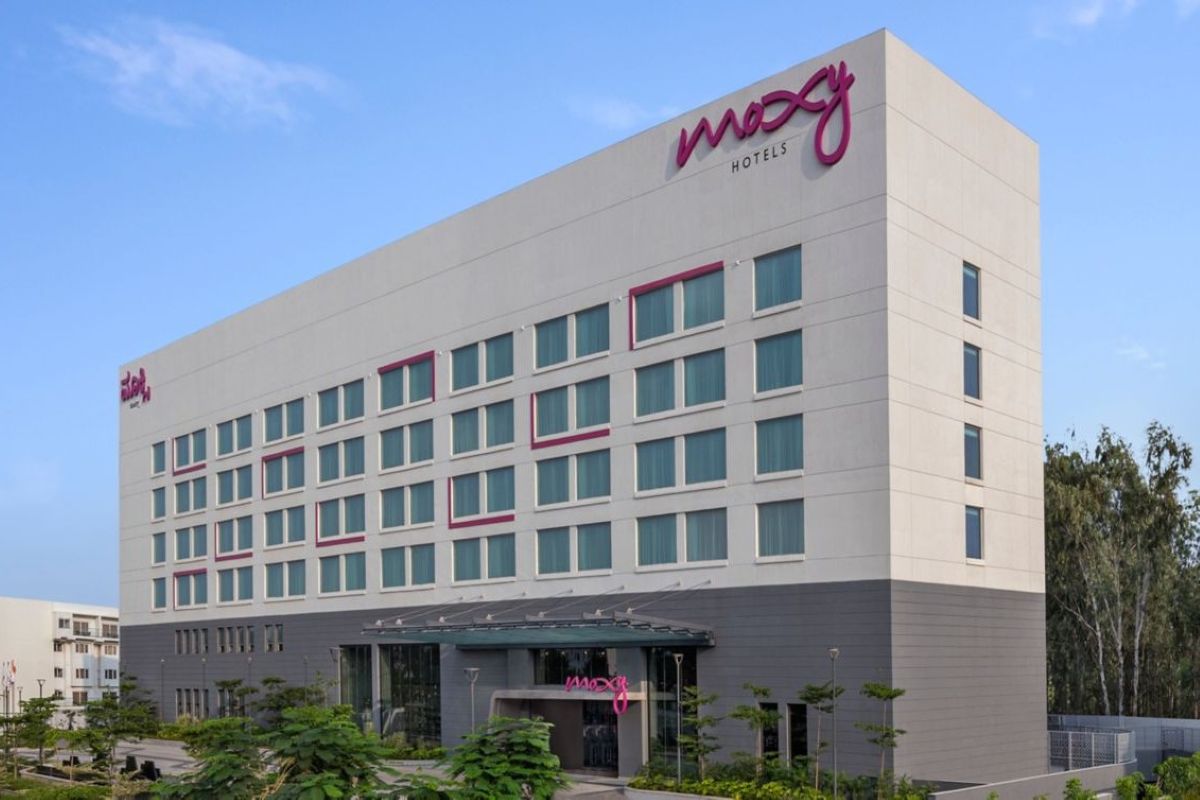Singapore Changi Wants to Turn Happy Passengers Into Returning Tourists

Skift Take
As airports such as Singapore's Changi and Dubai International continue to build their reputation as hubs and main connecting points in their respective regions, millions more passengers each year are passing through their terminals from one flight to another.
Many travelers who fly through Changi and Dubai, for example, never leave the airport and are captive audiences -- sometimes for hours on end -- as they wait for connecting flights. This has led Changi, and Dubai to an extent, to add more attractions and brand their terminals as quasi-destinations in an attempt to keep travelers happy but also to help convince connecting travelers that they should make another trip to actually visit the destination.
Changi is the exception to the rule when considering creature comforts in airport terminals. A movie theater, outdoor space, butterfly and rock gardens, a rooftop pool, luxury shopping, and Singapore food stalls are only a few examples of how the airport has invested in making its terminals more enticing.
Changi's award-winning terminals, however, differ from many of the world's airports that haven't invested in becoming tourist attractions themselves. Changi is also one of the world's busiest airports by passenger traffic and has felt the pressure to expand and improve offerings as rival gulf carrier hubs grow their bases and routes.
But does designing airports as destinations in their own right help influence travelers' intents to book another trip to spend time in a destination?
Sometimes it does, according to researchers from Queensland, Australia's Griffith University who used Changi Airport to study how airport terminal amenities and attractions can influence travelers' intentions to return to destinations if they previously only connected through an airport.
About one-third of Changi's 58 million travelers last year connected to other flights and didn't leave the airport. While Changi's attractions such as gardens and shopping keep many travelers satisfied and give them plenty of activities to do during long layovers, Singapore Airlines and the iconic Singapore Girl -- not Changi Airport -- was more influential in travelers' intentions to return to Singapore on another trip.
Dave Weaver, along with colleagues Jackie Chuanzhong and Lauren Lawton, surveyed 700 connecting travelers online who hadn't had a stayover visit in Singapore to find out how services and facilities at Singapore Airlines and Chang Airport influenced travelers intentions to revisit the city-state.
The survey, which only included travelers who flew Singapore Airlines to Changi for connecting flights, was conducted in July 2013 and results were only published earlier this month.
On average, respondents had traveled through Changi twice during the past two years and had a layover time of two to three hours. Some 52 percent of respondents were men, the average age of respondents was 28, 48 percent were from China (including Hong Kong, Macao and Taiwan), and 91 percent had a college education.
Some airport and airline services and facilities such as gardens, stopover packages and a free city tour organized by Singapore Tourism Board had low influence compared to other services and offerings included in the survey.
Weaver said Changi's free Wi-Fi was one of the airport's most influential offerings in respondents' intent to revisit. "Pretty much everybody is aware of the Wi-Fi and uses it and since it's good that gives travelers a good impression," he said. "Now, whether those intentions are translated into actual visits behavior or not, that's one thing that remains to be seen."
The chart below shows which attractions, facilities and services were most influential in travelers' intent to revisit Singapore. As shown in the chart, the Selected Influence cluster highlights findings from respondents who were only influenced by specialized souvenir shops, special theme terminal exhibitions or displays, the butterfly garden and the Singapore Airlines on-board Singapore promotion video. The Low Influence cluster includes respondents who, comparatively, were hardly influenced by any terminal or airline attractions or services.
The High Influence cluster includes respondents who showed more influence than respondents in the other two clusters. "The High Influence cluster displays much greater transfer frequency and time and is much more likely to have post-graduate qualifications and to reside in China," the study states. "There was no gender influence."
How Influential are Changi Airport and Singapore Airlines in Convincing Travelers to Revisit?
Services and facilities included in the cluster analysis
| Activity or Service | Overall Influence Value (0-5) for 700 Respondents | Selected Influence Cluster (331 Respondents) | Low Influence Cluster (203 Respondents) | High Influence Cluster (160 Respondents) |
|---|---|---|---|---|
| Visiting a specialized souvenir shop | 4.15 | 4.46 | 3.33 | 4.17 |
| Visiting a special themed exhibition/display at the terminal | 3.96 | 4.95 | 2.05 | 4.33 |
| Visiting butterfly garden | 3.59 | 5 | 0.64 | 4.4 |
| Singapore promotion video on Singapore Airlines | 3.53 | 4.23 | 1.86 | 4.2 |
| Personal conversations with Singapore Airlines cabin crew | 2.39 | 2.6 | 0.89 | 3.86 |
| Visiting the local interest section of terminal bookstore | 2 | 2.09 | 0.57 | 3.63 |
| SilverKris Magazine -- Touch Down Category | 1.64 | 1.33 | 0.74 | 3.43 |
| Visiting sunflower and light garden | 0.99 | 0.01 | 0.08 | 4.18 |
| Joining free city tour organized by Singapore Tourism Board | 0.79 | 0 | 0 | 3.42 |
Services and facilities NOT included in the cluster analysis
| Activity or Service | Overall Influence Value (0-5) for 700 Respondents | Selected Influence Cluster (331 Respondents) | Low Influence Cluster (203 Respondents) | High Influence Cluster (160 Respondents) |
|---|---|---|---|---|
| ‘Singapore Girl’ service style | 4.77 | 4.96 | 4.56 | 4.63 |
| Cabin food | 4.76 | 4.93 | 4.55 | 4.66 |
| Cabin beverage | 4.6 | 4.75 | 4.39 | 4.55 |
| Airport Wi-Fi | 4.42 | 4.73 | 3.87 | 4.49 |
| Collecting local stamps at postal kiosk | 0.74 | 0.18 | 0.14 | 2.67 |
| Visiting orchid garden and koi pond | 0.67 | 0.01 | 0.16 | 2.68 |
| Visiting bambo strip | 0.63 | 0.01 | 0.04 | 2.68 |
| Visiting fragrant garden | 0.62 | 0.01 | 0 | 2.69 |
| Visiting cactus garden | 0.59 | 0.01 | 0.08 | 2.44 |
| Visiting fern garden and koi pond | 0.59 | 0.01 | 0.1 | 2.42 |
| Singapore Airlines boarding pass privileges | 0.58 | 0 | 0.09 | 2.4 |
| Singapore Airlines stopover holiday package | 0.52 | 0 | 0.11 | 2.1 |
| Singapore Airlines hop-on bus | 0.5 | 0 | 0.09 | 2.4 |
Note 1: Values are based on a scale of zero to five.
Note 2: Values in bold indicated that the influence degree is significantly higher than the other two groups. Italicized numbers indicate that the influence degree is significantly lower than the other two groups.
Note 3: The 13 services and facilities "not included in the cluster analysis" weren't included in the first round of surveys but were included in the second round.
Are Airports as Quasi-Destinations Influential to Travel Intent?
There's a difference between making an airport a fun place to visit and making the number of airport attractions overwhelming, said Weaver. "If you could appeal to people who have a longer stopover time because, you know, it's quite intuitive, but the people who are most amenable to this conversion effect are people who've flown through Changi Airport several times," he said.
Travelers with a layover of more than three hours offer the most opportunity for the airport and destination. "Changi has all these gardens so why not tell them about it when they access the Wi-Fi and say 'hey, here's a garden trail you can walk through the terminals," said Weaver. "So you anchor it with the butterfly garden and maybe they give travelers a free beverage and sell it as a well-being and health experience while you're waiting for your transfer flight."
Changi's butterfly garden, for example, was moderately influential to respondents in making them think about a future Singapore trip. "There's also an orchid garden, a koi pond, a so-called fragrant garden and a cactus garden, and you know, the airport spends a lot of money to maintain these things but they have virtually no impact on influencing people to visit Singapore," said Weaver. "And partly, it's because they're in obscure locations within the airport. And people just think 'oh, it's just some basic gardening or something.'"
Changi Airport said that it runs daily surveys of travelers to gauge their satisfaction with the terminals and results show they're generally pleased and are likely to return if they get the opportunity. "Last July, new interactive installations and visual treats showcasing local cultures were introduced across Changi’s three terminals to engage and encourage visitors to explore Singapore in and beyond the airport, whether on this trip or their next," a spokesperson for Changi Airport Group said.
Changi also updated its free Singapore tour for connecting travelers last year to include different itineraries with more frequencies. The airport and tourism board also have on-going joint marketing initiatives which include meetings and events programs and fly-cruise partnerships.
The Airline Experience as an Influencer in Travel Intent
Airlines -- not airports -- are often where travelers get their first impressions of destinations from how they're treated at check-in, service quality from flight attendants, in-flight entertainment and food and beverage served onboard.
The fact that respondents said Singapore Airlines' "Singapore Girl" style and service standard was highly influential in their intent to return to Singapore initially surprised Weaver and his team. "Singapore Airlines is always getting the top awards in large part because of the Singapore Girl style, and, you know, they've had that branding for more than 40 years," said Weaver. "That's their primary thing and they have to keep that but I think if they integrate it with some of the things, like the butterfly garden, I think that creates a one plus one equals three effect."
Singapore Airlines' Singapore promotion video that's part of the in-flight entertainment system, however, was only moderately influential according to respondents. "Things like the in-flight video, magazine and personal conversations with cabin crew about Singapore have high awareness, high participation and high satisfaction but the influence on intention to revisit is just a little bit less," said Weaver. "It's still positive, but it's not anywhere near as influential as the Singapore Girl or the in-flight menu."
Singapore Tourism Board and Singapore Airlines work together to market the city and both organizations signed a two-year, $35 million partnership in April 2015 to help unify efforts and convince more travelers to visit Singapore.
Many Airports Miss Out on Targeting Stopover Travelers
Targeting stopover travelers is difficult for airports but not impossible.
Measuring travel intent to return to a destination based on airport Wi-Fi or shopping is legwork for both tourism boards and airports. "With airport folks, they're focused on what they have to do which is to process people through," said Weaver. "It's hard to get them to think about connecting the airport and destination experience."
Singapore is unlike many other airports in that a connecting travelers' next flight is always international and involves passport controls. Many travelers flying through Changi are already flying long distances and don't have the luxury of adding on more time for stopovers to already tight schedules.
But major U.S. hubs such as Atlanta's Hartsfield-Jackson and Dallas/Fort Worth Airports have high volumes of connecting domestic travelers who aren't subject to immigration lines, for example. "There's enormous potential in the U.S. and other large hubs but I really don't see many examples on the airline side or on the airport side where both sides are willing to invest in these kinds of opportunities like Changi's doing," said Weaver.
New York City's JFK and LaGuardia Airports are undergoing massive renovation projects and Baltimore/Washington International Airport is adding new shops and Baltimore-based restaurants to its terminal. Albeit, those projects aren't specifically for stopover travelers or to convince travelers to revisit those cities.
Stopover travelers also aren't a homogenous market and preferences are wide-ranging. "We were surprised that our Chinese respondents seemed to be particularly open to coming back and seeing things in Singapore," said Weaver. "Many people still have the impression of Chinese people as a bit insular. But they're very open, even more so than our Australian respondents, to this quasi-destination conversion effect."
Millions of travelers will connect through Changi and other airport megahubs this year and many are likely more concerned with leaving as soon as possible rather than staying a few extra hours to see a garden or movie.
Convincing travelers to budget time for a stopover remains a challenge for destinations and could end up being more costly depending on flight availability and how long a traveler wants to stay in the airport.
It's also important to understand that travel intent to return to a destination could take years to become a trip. And as this study shows, airports and destinations could devote large portions of their budgets to design elements and attractions that don't end up resonating with travelers rather than focusing on core products that have track records of popularity and satisfaction.




